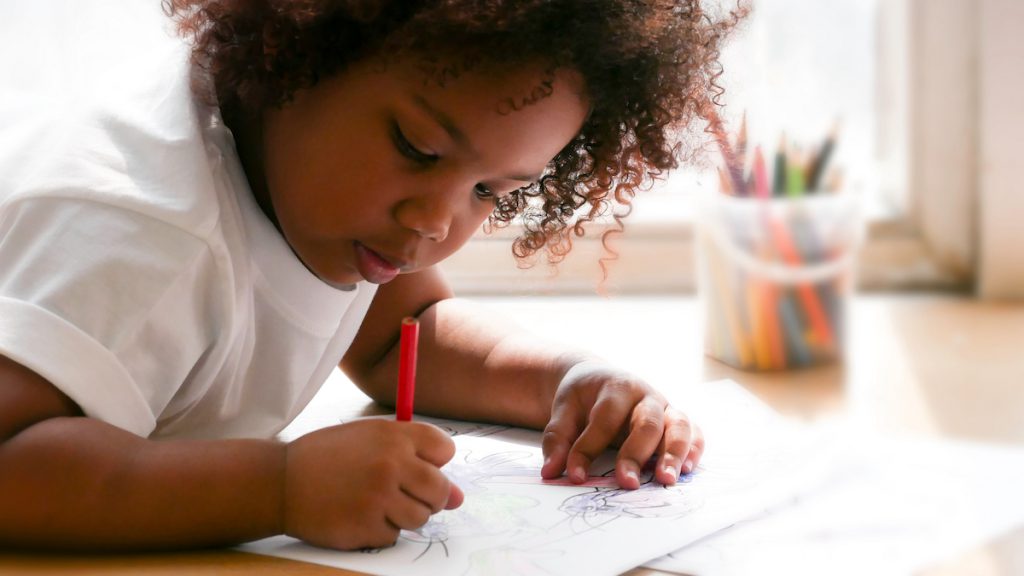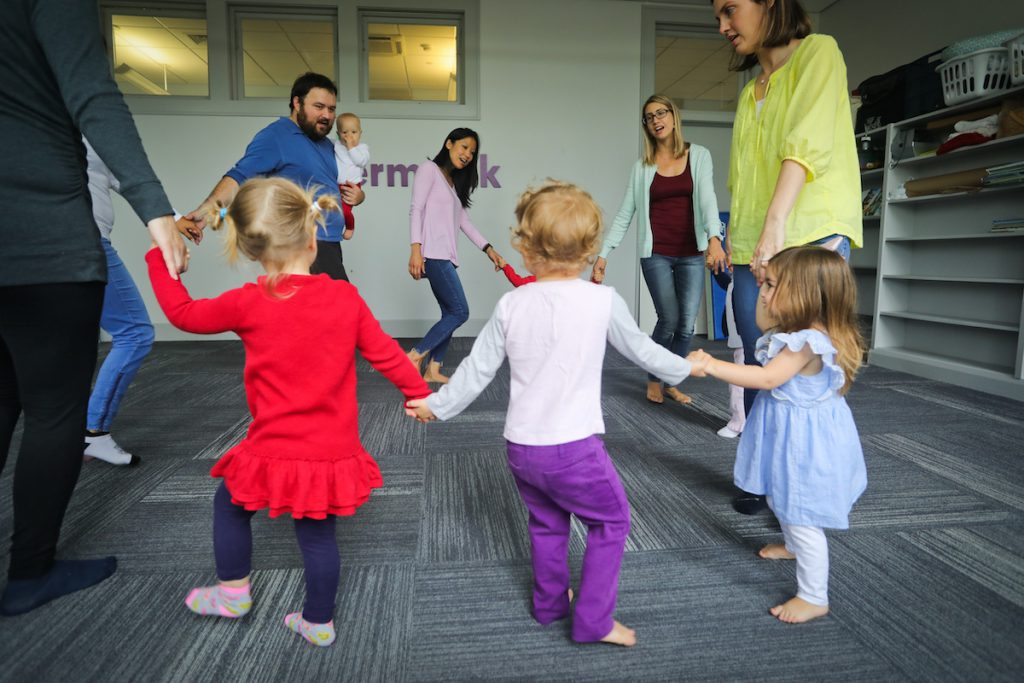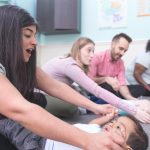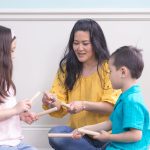3 Musical Ways to Support Neurodivergent Learners
It may seem counterintuitive, but neurodivergent learners thrive with the right multi-sensory activities. Music—a multi-sensory activity that stimulates all parts of the brain at once—promotes everything from self-regulation to emotional expression.
And that turns tricky transitions and long days into beautiful learning moments (for children and their special grownups).
3 Daily Music Activities for Neurodivergent Learners
Listen to instrumental songs.
Why?
- They help focus the brain, especially if they involve instrument solos.
- They can spark active listening (listening with the intention of discovery).
- They can set the tone or change the general outlook of the day.
When?
- Musical listening is always a good idea, but try it out on the way to school, a doctor’s appointment, or an activity that can trigger stress.
How?
- Try an instrumental song with a medium tempo. “Simple Gifts” on the free Kindermusik app is a great place to start. It’s just right for any time of day.
Draw what you hear.

Why?
- Just like music, drawing is linked to activating the brain’s reward centre. So, doubling up on that dopamine increase provides a big social-emotional boost.
- Free drawing engages fine motor skills without stress. No rules.
- Pairing what you hear with what your mind’s eye sees, and then translating that on paper supercharges the imagination.
When?
- This is the perfect low-key activity…after school, rainy days, or after an overstimulating event.
How?
- Research tells us our favourite songs release more dopamine, but try to change up the tempo depending on mood. For example, when children have tough days, slow, soothing songs can help calm the body and prevent meltdowns.
Have a dance party.

Why?
- At every age, dance improves overall strength, coordination, balance, self-confidence, and concentration.
- Studies show moving in sync (think: circle dance or just doing any movement, like waving your arms, together) boosts bonding, which is critical for whole-child development.
- Children are asked to sit still in so many scenarios—school, waiting rooms, at the table, etc. Making dance part of a daily routine gives them a safe space to get the wiggles out, express emotion on their terms, and feel proud of their creative choices.
When?
- Dance breaks are perfect for transition times, like between childcare pickup and snack/a meal, but they can re-set the brain at any time. Just finished a long errand? Dance party. Trouble following directions? Dance party.
How?
- For toddlers and preschoolers, try alternating freeze dance (stopping and starting with the music, which boosts self-regulation) and free dance to balance following directions and creative freedom.
Try these easy activities at home, in a learning space, or wherever you find yourself needing a redirection tool. For children with unique learning styles, music can open the door to stronger communication, trust, and self-confidence.
Want to take it a step further? Try a Kindermusik class at Hamilton School of Music or Adaptive Music Lessons for neurodivergent learners.
Check out our early learning kits to learn more about music-based strategies to empower neurodivergent learners.




